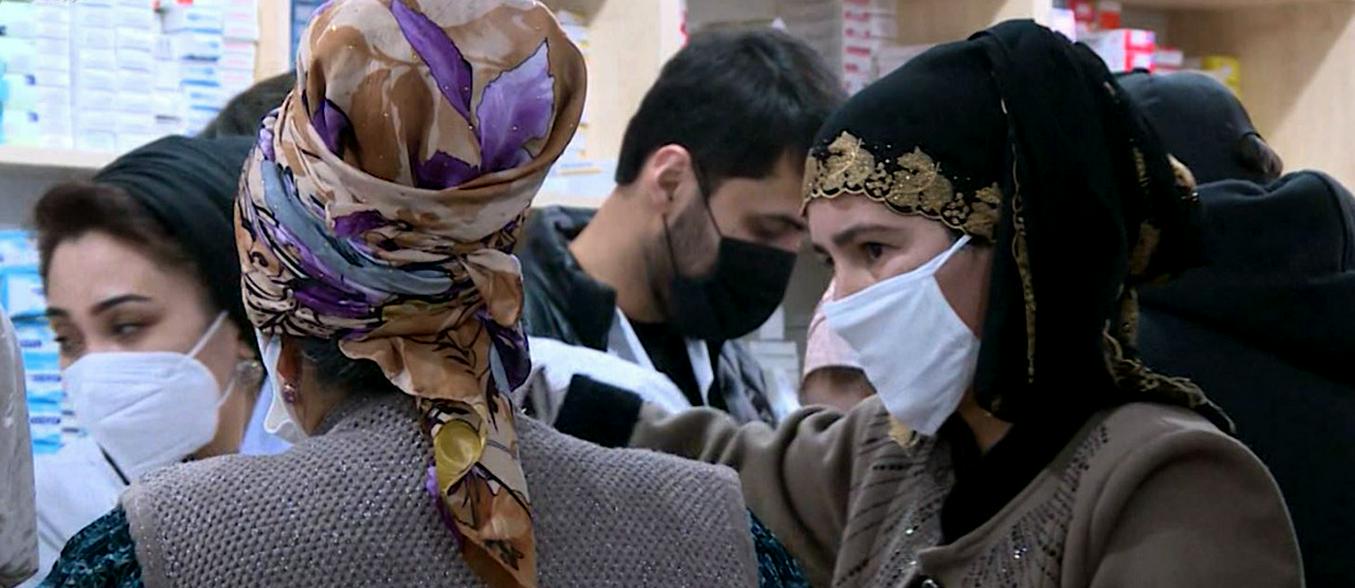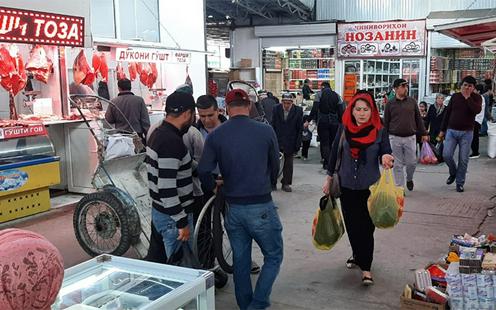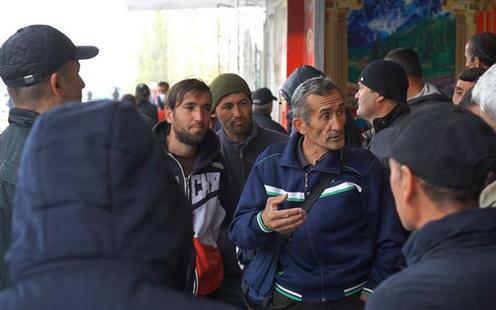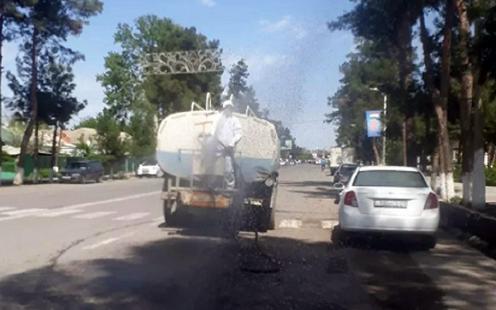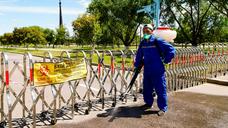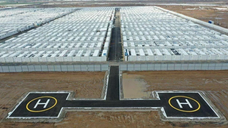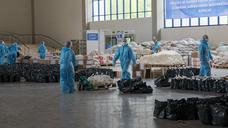The authorities in Tajikistan continue to assert that their country remains free of the coronavirus, yet many Tajiks are unconvinced. Sceptics argue that state officials are either concealing the true state of affairs or simply failing to detect infections due to the limited scope of testing. All over the country, Tajiks discuss examples friends and relatives who have fallen ill, try to establish if they have symptoms of COVID-19 and give one another advice on how best to fight the virus. Fergana sought to find out how Tajikistan is experiencing the global pandemic.
Anticipation worse than the virus itself
“If the virus has already reached 200 countries in every continent around the world, then there must be cases in Tajikistan, which is right next to China after all. Especially since all of our neighbours already have cases of infections. We’re not some kind of superheroes who can’t be touched by the virus,” one Tajik journalist told Fergana, on condition of anonymity.
According to her, many people are now counting down to the end of the quarantine period for the last arrivals from abroad, which is due to be completed in mid-April. “It feels as if it would be a relief for people if the authorities did report cases of the virus: everyone is hoping that they will introduce a quarantine and a lockdown like in other countries,” she says.
Nervousness and “anticipation” of the virus have been particularly noticeable since 5 April, when RFE/RL’s Tajik service Ozodi reported that, following the death of a 60-year-old patient in the country’s northern Jabbor Rasulov district, a local hospital had been sealed off and all of its staff placed in quarantine. Although the report did not mention the coronavirus, many assumed that it was this that the man had died of. The next day, a number of local residents chose not to leave their homes and stopped sending their children to school. The regional health authority and the Tajik health ministry hurried to announce that the man had died of pneumonia but that tests for COVID-19 had come back negative. The quarantined medical staff too objected that no coronavirus infections had been confirmed among them. Yet the authorities’ assurances by no means succeeded in reassuring all.
(Note: Since this article was originally published, speculation surrounding this and other deaths in Tajikistan has only incerased. Following the death on 1 April, referred to above, of 61-year-old Habibullo Shodiev in the Jabor Rasulov district, on 11 April another man in the same district, Hojimuhammad Toshev, died of what has officially been recorded as heart failure. However, one doctor at the hospital reported that Toshev too had had pneumonia. It emerged that Toshev had also been in contact with Shodiev’s brother. The authorities said that, like Shodiev, Toshev had been tested for the coronavirus and the results had come back negative. Then, on 13 April, 58-year-old Oishamoh Alimova, a cleaner at a quarantine centre for returnees from abroad also passed away, with her death attributed to tuberculosis and heart problems. Her family denied that she had had tuberculosis. Finally, on 14 April it was reported that the funeral of another apparent tuberculosis victim, 61-year-old Shodmon Rajab in the Shahriston district, had taken place without his body, after medical staff buried it at an unknown location. Earlier reports that his family had been placed in quarantine were refuted by the authorities.)
On social media sites, some called for schools and universities to be closed. Parents had hoped that the spring holidays would be extended, but the school term got underway as normal on 1 April. Some parents decided not to put their children’s health at risk and kept them home from school. But when it was announced that these children could be made to repeat a year and their parents fined, the parents were forced to send their kids off to school once again.
“Why don’t they introduce a lockdown? Why don’t they close kindergartens, schools and universities? Is it really possible to make sure children wash their hands a hundred times, don’t touch their faces and maintain a social distance? Of course not. And if a child gets sick, maybe they’ll recover quickly, but they will pass it on to their whole family, including their grandparents,” mother-of-two Nigina says indignantly.
Some people, however, carry on in the midst of the coronavirus panic unperturbed, safe in the conviction that “everything is in the hands of God”.
“If God wants it to happen, then no preventive measures will help, and if not then you will be safe even without trying to protect yourself. So whether you wear a mask, whether you stay at home or not, you can’t escape fate,” one woman from Dushanbe said, expressing a commonly-held view.
Others are against introducing a lockdown and closing down the service sector, shops and other places of work for economic reasons, fearing they will be left without their wages.
“The only income my family has is the money I make each day,” said one taxi driver. “If the government bans all transport and I don’t go out to work each day then my family will have nothing to eat. We don’t have any savings. And if they close the markets, stalls and stores, can you imagine how many people will be left without any money? How will people live when that happens?”
Rising prices
Against the background of the coronavirus pandemic, food prices inside Tajikistan have been on the rise. Previous prophylactic measures by the government, particularly the temporary closure of mosques in March, sparked panic among the public. People rushed to stock up on necessities and prices shot up. Although the frenzy subsequently subsided, prices of a number of goods, in particular flour, have not gone back down to normal levels, in spite of government assurances that there are no flour shortages and that the country has sufficient flour stocks to last for a long time ahead.
For example, 50kg bags of flour at markets in Dushanbe are now selling for 250-260 somonis ($25-26), whereas the price at the start of March was 180 somoni ($18; the average monthly wage in Tajikistan is around 1,300 somoni or $130). Fruit and vegetables too have become more expensive, while in some places potato prices have doubled. Meat prices are up from 50 to 60 or even 70 somoni per kilo, while packets of pasta from Russia, previously 7 somoni are today selling for 9 or 10.
Particularly noticeable have been rises in the price of products thought to possess antivirus or antibacterial properties. Lemons, for example have tripled in price from 2 to 5 or 6 somoni a piece, and garlic has gone up from 45 to 80 or even 100 somoni per kilo (one garlic seller explained that this was the result of the closure of the border with China, but that local production would soon cause prices to drop). Prices for harmala, a local herb whose smoke fumes are traditionally used for their antiseptic properties have risen from one to anything between 4 and 10 somonis a bunch. Unsurprisingly, disinfectants and medical face masks too have more than doubled in price.
“How can we live with such prices, when wages are the same as before? If local products have become so expensive, then I dread to think about the cost of the imported clothes and shoes that I need to buy my children,” said Dushanbe resident Zamira worriedly.
If all are feeling the pinch, particularly anxious right now are the many (around 400,000) Tajik families who depend on labour migrant remittances for their upkeep. Since the lockdown in Russia, many Tajik families have been left bereft of the assistance of relatives who went abroad specifically to send money back home. The Tajik mardi kor (“man of labour” – labourers for hire) market is full of would-be migrants no longer able to travel to the Russian Federation, but there is very little work available for them.
Alternative versions
The coronavirus is an ever-present topic of conversation in Tajikistan. People are even speaking of a strange flu that seems to have left many unusually ill.
“In our stairwell alone, five out of six families have suffered from a particularly nasty form of flu, with one family member in each case ending up in hospital with pneumonia. I myself know four elderly people who have died in recent months from complications resulting from flu,” wrote one Dushanbe resident in a local group on Facebook.
“My two children went down with the flu – one of them was vomiting, the other had diarrhoea. At the time, doctors told me that some kind of “unknown flu” was going around. The children got it really bad, but quickly recovered,” recounted interviewee Zamira.
Healthcare workers have confirmed that, starting in October last year, many people in Tajikistan have fallen ill with this “unknown flu”, with symptoms similar to those of COVID-19 (scientists who have decoded COVID-19’s genome have established that the virus first appeared in November or in the second half of October 2019 – Fergana). The illness often led to pneumonia, and there were some fatalities. This “unknown virus” may have been circulating in the country since autumn last year, and it is simply that, until recently, Tajikistan did not have the test kits to diagnose it.
“In my opinion, the first wave of coronavirus infections in former Soviet countries occurred between October and December last year,” says Burhonidin Bahovadinov, professor of haematology, transfusiology and transplantology at the First Pavlov State Medical University of St. Petersburg. “There were a lot of cases, including in Tajikistan, of a particularly severe flu with complications in the form of double pneumonia. Not a small number of fatalities were recorded in intensive care units, especially in the north of the country. Many people, including some of my acquaintances in Tajikistan, had symptoms characteristic of COVID-19. The illness came in waves, as if patients were hit by the infection 2 or 3 times. But there were no means of diagnosis. This would explain the supposed absence of the coronavirus in the country. Only blood serum tests on people who have recovered from the flu could show if they had had coronavirus infections or not. So far there are no such tests, but they are being developed.
“In February this year, three of my colleagues from Dushanbe flew in to Moscow. I travelled from St Petersburg to see them. Two of them had already had the flu, the third fell ill while he was in Moscow. He got a severe form of it, with symptoms characteristic of COVID-19. I shared an apartment with them for two days. After returning to St Petersburg from Moscow, I too fell ill. My symptoms were the same as my colleagues from Dushanbe. I only fully recovered three weeks later. I think that right now in Tajikistan there are individual cases of COVID-19 that are resulting in deaths. These cases are either not being diagnosed or they’re being hidden from the public so as not to cause fear and panic among the population.”
This raises the question: could a virus that has led to a large number of deaths in other countries really pass by almost unnoticed in Tajikistan? Doctors think that this could be explained by the fact that, on the one hand, there are far fewer elderly people in the country than elsewhere around the world (two thirds of the population of Tajikistan are under 35 years of age), and on the other, by the local population’s attachment to folk medicine.
“In the event of colds and viral illnesses, Tajiks often turn to traditional remedies – they eat warming meals, give themselves steam inhalations and drink herbal teas. Rather simple methods are also being recommended to treat the coronavirus – drinking plenty of liquids, humidifying the air inside buildings, steam treatment methods. Because of this, it is entirely possible that Tajiks have for the most part been recovering from this virus after treating themselves with simple traditional methods. Since at the time they knew nothing of the coronavirus and were not afraid of it, given the general state of calm the virus passed by much less noticeably. And when news emerged in January of the new coronavirus in China, healthcare officials in all likelihood figured that something similar had already hit the country and that there could be a second wave. For this reason they took swift and decisive measures. Tajikistan was one of the first countries to close its border with China and suspend all flights connections with the country, which may have prevented a second wave of the infection,” said one doctor in Dushanbe, on condition of anonymity.
Measures
According to official information, the Tajik authorities have drawn up a plan of action in the event cases of coronavirus are confirmed. 700 beds have been prepared at the Istiklol medical centre in Dushanbe and at regional and district hospitals. If needed, other beds will be freed up.
“So far we are still working as normal. They assure us that everything is under control and that there won’t be any national emergency or lockdown. Maybe this is to avoid panic spreading to medical staff, because we see what is going on in other countries and of course we too are worried,” said a doctor at one hospital in Dushanbe.
Dozens of industrial enterprises have switched to producing medical masks, protective clothing for doctors and disinfectants. An extensive public information campaign has been deployed to inform the public about the coronavirus and personal hygiene. Yet the country’s population continue to work and go to school and there has been no talk of introducing city-wide quarantines or lockdowns or declaring a state of emergency.
“I don’t think it’s worth Tajikistan resorting yet to measures like a general lockdown. Sweden and Belorussia, where the situation remains relatively stable and there are low numbers of cases of coronavirus infections, have also taken this path. Preventive measures make it possible to spread out the epidemic over a longer period of time and gain us some time to make better preparations for highly-qualified help to the most severe patients,” says Burhonidin Bahovadinov.
Regional Health and Care Coordinator for the European section of the International Federation of Red Cross and Red Crescent Societies Davron Mukhamadiev argues that Tajikistan should focus on preventive measures – above all the cancelation of all major public events and making sure people carry out social distancing.
“Many people are asking the question: are there really no cases of COVID-19 in Tajikistan? Of course, it’s a miracle that even though we’re surrounded by countries with relatively high numbers of infections, we still don’t have any confirmed cases of the virus. Personally, as a specialist, I don’t have any reasons to doubt the official version. With the help of the WHO, the Tajik health ministry has significantly improved its laboratory capacity in recent months, the country has obtained test kits that meet international requirements. In my opinion, we should be concentrating less at the moment on statistics than on the lessons we can draw from the experiences of other countries.
“Specialists in the areas of epidemiology and public healthcare agree with me that it is very easy to miss the start of an epidemic. Yes, the borders are basically closed, people who have arrived from other countries are in quarantine, but what about the medical staff who are attending to them? They are not in isolation – they go home, are in close contact with family members, go to the shops, use public transport. This poses a huge risk. In Europe there are very high rates of healthcare workers in their total infections. Why is this? It’s because they are right there in the centre, in the quarantine zones. Many of them choose not to go home. It’s important to think about the protection and isolation of medical staff themselves, since the incubation period can be anything from 1 to 14 days, and in many cases people can be asymptomatic but still pass the virus on to others.
“Another important recommendation is social distancing of no less than 1.5-2 metres on the streets, in shops and on public transport. Is this possible in Tajikistan without special government measures? I think not, and this is a big risk factor. People crowd together at markets, arrange weddings, invite guests, travel around in jam-packed public transport. I read one headline that said: “Drivers must ensure that public transport and marshrutkas are not overcrowded”. How is this possible to implement in practice? The passenger area in a marshrutka is 2.5 metres long at most – does that mean just one person should ride in it?
“We know that the elderly and those with chronic illnesses and weakened immune systems are at particular risk. Are any special measures being implemented for them? Are people in care homes being isolated? This is extremely important.
“Properly observing personal hygiene rules – washing the hands and face with soap – can be 100% effective. But in Tajikistan over 50% of the population, especially in the countryside, doesn’t have access to clean water. This is already a problem in itself, but in the event of an epidemic it can seriously exacerbate things. We can’t ignore all these risk factors, we have to think carefully about which measures can be taken ahead of time to ward off the negative effects of the spread of the virus for the public,” says Mukhamadiev.
Mirali Kholmurod
Translated and adapted by Nick L.
-
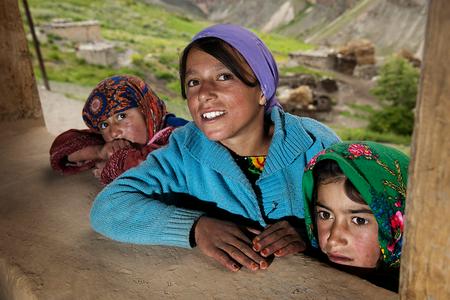 09 August09.08The two deportations of YaghnobDeep in the Tajik mountains live the last bearers of the dying language and culture of the ancient Sogdians
09 August09.08The two deportations of YaghnobDeep in the Tajik mountains live the last bearers of the dying language and culture of the ancient Sogdians -
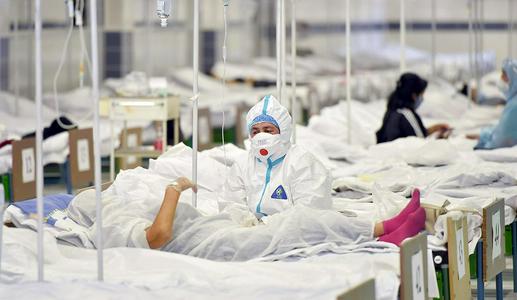 06 August06.08What went wrong in Central Asia’s coronavirus response?How poor planning and a fixation on faulty test results undid months of hard work
06 August06.08What went wrong in Central Asia’s coronavirus response?How poor planning and a fixation on faulty test results undid months of hard work -
 31 July31.07“Another week and I wouldn’t have got out of there alive”Why patients in Uzbekistan fear ending up in hospital, and medics fear the end of the lockdown
31 July31.07“Another week and I wouldn’t have got out of there alive”Why patients in Uzbekistan fear ending up in hospital, and medics fear the end of the lockdown -
 30 July30.07“The number of graves now is 15 times greater”Lebap region residents told to hide new graves from satellite imaging amid more reports of chaos in Turkmenistan’s COVID-19 response
30 July30.07“The number of graves now is 15 times greater”Lebap region residents told to hide new graves from satellite imaging amid more reports of chaos in Turkmenistan’s COVID-19 response -
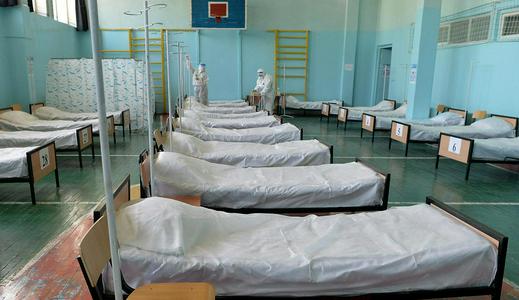 25 July25.07Slaying the hydraWhy the coronavirus has been winning in Kyrgyzstan
25 July25.07Slaying the hydraWhy the coronavirus has been winning in Kyrgyzstan -
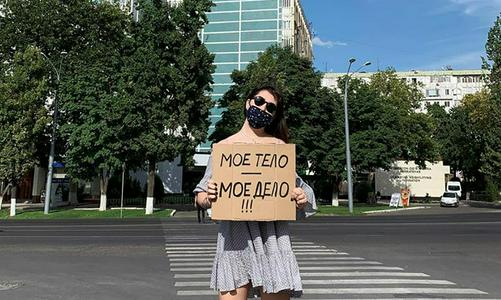 21 July21.07War of worldsThe first public protest action in Uzbekistan in defence of women’s rights met with an aggressive reaction from much of society
21 July21.07War of worldsThe first public protest action in Uzbekistan in defence of women’s rights met with an aggressive reaction from much of society
